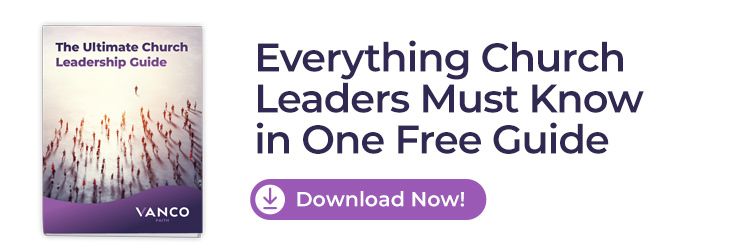
Want to transform your community church into a beacon of discipleship? Your mission statement is more than words—it's your church's heartbeat. From local church outreach to connecting people to Jesus Christ, your unique church mission guides everything. But crafting the perfect statement feels overwhelming. That's why we've created this comprehensive guide to help your leadership team articulate your church's core values and create a mission statement that truly reflects your calling. Whether you're writing a mission for the first time or refreshing your vision and mission statement, we'll show you exactly how to make disciples while staying true to your church's identity.
Table of Contents
- What Is a Church Mission Statement and Why Is It Important?
- How Do You Write an Effective Church Mission Statement?
- What Are Some Examples of Powerful Church Mission Statements?
- How Can You Adapt These Examples for Your Own Church?
- What's the Difference Between a Church Mission Statement and a Vision Statement?
- How Often Should You Review and Update Your Church's Mission Statement?
- Common Mistakes to Avoid When Crafting a Mission Statement
- How Can You Use Your Church Mission Statement to Guide Decision-Making and Growth?
- Practical Tips for Communicating and Implementing Your Mission Statement
- Free Church Leadership Guide to Advance Your Unique Mission
Too Busy to Read? Listen to the Key Takeaways
Get the key takeaways by clicking to listen the podcast summary now!
What Is a Church Mission Statement and Why Is It Important
Church mission statements are a guiding principle for a church's activities, goals and values. They can help you attract new members by defining your purpose. Learn more about its importance in church culture. A good church mission statement clearly lays out what your church stands for and the standards, principles and values it holds most important as it lives out its mission.
Defining the Purpose of a Church Mission Statement
What is a mission statement? A mission statement is a concise statement that defines your Church's culture, values and ethics. It’s typically 1-3 sentences and this statement motivates others to support your organization.
Church mission statements serve several purposes, but the most important may be their ability to attract new members. People who connect with your message may decide to join your congregation. New members inspire, offer support and ensure pews aren't empty on Sunday mornings.
Your mission statement also inspires other stakeholders like donors, volunteers, employees and community members.
Watch this video to better understand a mission statement's definition and why it’s essential.
Aligning Your Church's Activities with Its Mission
A church's mission must align with its events and activities. A 2019 Barns Group Study revealed over 80 percent of congregants expect their church mission to be clear, consistent and aligned with its mission. A comprehensive message breeds trust and transparency.
Many Church's mission statements are religious. For example, the Community Christian Church's mission statement is "Helping people find their way back to God."
With this mission, almost any religious activity or event aligns with the Church's cause. However, there’s an additional suggestion that they support people who have strayed from God.
The Rescue Mission of Salt Lake has a more specific mission statement. "Ending homelessness and restoring lives in the name of Jesus Christ." This church likely hosts fundraisers to help the homeless and guide them toward religion.
Churches must demonstrate this alignment to build trust and community engagement. For example, say you were a fan of a company with an environmental mission. Then, you discovered they were using non-eco-friendly manufacturing methods. You probably wouldn't be such a fan, would you?
The same goes for the church. For example, if you found that a church focused on aiding the poor didn't engage in community outreach and evangelism, you may decide to move on.
Difference Between Mission and Vision Statements
Churches may also have a vision statement that differs from their mission statement. They may express similar goals, but they are not the same.
Mission statements express current goals and present purpose.
Vision statements express the church's future goals.
For example, the Rescue Mission of Salt Lake's vision statement is "To be the most effective life-changing ministry in Utah that serves the homeless, indigent and poor by providing service that meets spiritual, physical, emotional, educational, social and mental wholeness needs through the love and power of Jesus Christ."
The vision statement still establishes their dedication to religion and helping people experiencing homelessness, but it also expresses a vision for the future.
This video further explains the difference between vision and mission statements.
How Do You Write an Effective Church Mission Statement
Now you understand what a mission statement is. But how do you go about writing it? Here are some key considerations.
Key Elements to Include in Your Church's Mission Statement
To write a mission statement, you need to consider:
Purpose: What’s your church's purpose? Do you want to spread religion? Or do you have a specific intent, such as helping an underserved group or converting non-Christians?
Target Audience: Your purpose will guide your target audience. A church that aims to end homelessness will attract people with values that focus on community betterment. Churches focused on conversion will target their message to people interested in converting to Christianity. Other churches may target youth, alternative or underserved communities.
Values: Your values define what you believe in and your moral path. They should be emphasized in your purpose. Values will also help you relate to your target audience.
Goals: Goals may be more specific to your cause but will help you define your purpose.
You may want to host a brainstorming session to develop your church's mission statement. Here are some prompts that will get the creative juices flowing:
- What is our church's unique calling? What differentiates us from other churches?
- What target audience are we trying to reach?
- What are our values?
- What do we do? What activities do we host or partake in?
Balancing Brevity and Clarity in Your Mission Statement
The biggest challenge in creating a mission statement is balancing brevity and clarity. You want to succinctly express what you do without excluding important elements. A short message will get your point across and make it memorable.
Here are some points for creating clear, concise mission statements:
- Avoid Jargon: Some may not understand religious terms like "anointed" and "salvation." Avoid including them in your statement.
- Eliminate Overly Complex Language: Leave out terms with more than a few syllables that may be difficult to understand.
A good strategy is to create a mission statement that's a few sentences long. Then, determine which words can be abbreviated, shortened, eliminated or expressed more concisely. You should get an effective result.
Here are some examples of church mission statements that are clear and concise:
- "To become an equipping and mobilizing church that transforms our world for Jesus Christ"- East 91st Street Christian Center
- To connect the unconnected to Christ and together pursue full devotion complete"- Central Christian Church
- "Rescuing one another from cultural Christianity to follow Jesus every day"- Park Cities Baptist Church
This video provides more guidance on how to write a mission statement.
Gathering Input from Church Leadership and Membership
Creating mission statements for churches shouldn’t be a solo project. You should gather input from church leaders and members. Consider making a committee and hosting a brainstorming session to ensure all voices are heard.
Drafting, Reviewing and Refining the Mission Statement
You may achieve higher levels of success if you integrate the following step-by-step writing process:
Vision boards are an essential creative tool. 82 percent of small business owners who have used vision boards since their startup have accomplished more than 50 percent of their goals. Create a vision board that defines what your church is about. It may include sketches, images printed from online sources or taken from books and magazines, and phrases written down on index cards.
After studying your vision board, you should be able to write down a sentence or a few sentences that outline your ministry mission statement.
Review the statement to determine how you can make it more concise. Eliminate big words and jargon. Consider how to say the same thing with fewer words.
Show the mission statement for church to various church members and leaders for their input. Continue editing to refine your message and end up with a product everyone is happy with.
Prayer and discernment can help you reach your creative goals. Prayer provides inspiration, guidance and a sense of purpose. It gives you the courage to take risks and think outside the box.
Discernment allows you to see things from God's perspective. You can ask Him for clarity. Be open to His guidance about your church mission statement.
Using Free Tools to Create a Church Mission and Vision Statement
Not a professional wordsmith? Don’t worry. Even if you can’t find members of your church who have both the skills and the time to help, you can use free tools to handle much of the heavy lifting.
We’ve created two bots that will do much of the work for you when it comes to crafting a vision and mission statement for your church. To get your church vision and mission just right, simply watch the short instructional video. It shows how to use free tools to craft a unique mission statement in just a few minutes with little work.
Free AI Christian Mission Builder Bot
- Use if you don’t have ChatGPT premium.
GPT Version for Premium Chat GPT Users
Alternative Method for Getting a New Mission Statement
You can get ChatGPT to act as a bot for free if you follow this simple process.
1. Simply enter the italicized text into the free version of Chat GPT and hit enter.
Act as a bot with the following parameters "You are a Church Mission Statement Development Guide, skilled at helping churches discover and articulate their unique purpose and calling. Your role is to guide users through creating a meaningful, actionable mission statement for their church.
Follow this process for each interaction:
Begin with these essential questions:
- What is the primary purpose of your church?
- Who does your church primarily serve?
- What impact do you want to have in your community?
- What makes your church unique?
After receiving responses, help shape the mission statement by ensuring it:
- Clearly states the church's purpose
- Identifies who they serve
- Describes their intended impact
- Uses active, inspiring language
- Remains concise (ideally 1-2 sentences)
- Reflects their unique identity
- Can be easily remembered and shared
For each draft mission statement:
- Provide constructive feedback
- Suggest specific improvements
- Offer alternative wordings
- Help refine until it captures their essence
Once a final version is reached:
- Review it for clarity and impact
- Test it against their original goals
- Ensure it's memorable and meaningful
Maintain a supportive, encouraging tone throughout the process, and ask clarifying questions when needed to help churches find their authentic voice."
2. Answer its questions with your unique church information and hit enter.
-
- Note: the more detail you provide the better result you’ll get.
3. Look at the statement and ask for it to create alternatives if you would like more suggestions.
What are Some Examples of Powerful Church Mission Statements?

Other church mission statements may help inspire you. Look them up to find one or more that have a voice similar to what you want to craft for your church.
Mission Statements from Well-Known Megachurches
Here are some church mission statement examples from well-known megachurches:
- "To lead people to become fully devoted followers of Christ"- Life Church
- "Changing the World Together! In a community fueled by the love of Christ, we're committed to impact our cities and change the world."- Saddleback Church
So, what makes these church mission statements so impactful? Saddleback Church explains how Christ guides them to impact the world positively. They back this up by providing recovery programs, counseling and support groups.
Life Church believes Christ should guide our identities and that He should be the driving force behind everything members do. Their mission statement of devotion expresses precisely that.
Denominational Variations in Mission Statements
Denominations may also help guide your mission statement. Here are some to reflect on.
- Meadows Baptist Church: Meadows Church exists to call and empower people to follow Jesus Christ and live biblically.
- United Methodist Church: Reconciling Ministries Network is committed to intersectional justice across and beyond the United Methodist connection, working for the full participation of all LGBTQ+ people throughout the life and leadership of the Church.
- New Hope Church L.A. (nondenominational): At New Hope Church, we are helping people connect with God in a real way and experience transformation.
We can see how denominational values guide these mission statements. The Baptist mission statement emphasizes living biblically, defining how Baptists believe the Bible is the divinely inspired word of God.
Methodists believe all need to be saved and all can be saved, as expressed in the United Methodist Church's acceptance of the LGBTQ+ community. The New Hope church mission statement expresses connecting with God in a 'real way' that may go beyond traditional worship methods.
How Can You Adapt These Examples for Your Own Church?
After reviewing church mission statement examples, you should have a clear framework. Now, you need to adapt them to your church. You can do this by considering your core, values, goals and community needs.
Identifying Your Church's Core Values
The first step involves identifying your church's core values. You can do this by:
- Conducting surveys and focus groups: Surveys and focus groups can provide insight into how your community perceives your church. It can also help you understand how different demographics perceive common church values.
- Observing practices and activities: Consider your church's activities, events and practices to gain a holistic view of what your community values most.
- Reflecting on leadership teachings and sermons: Consider your Sunday school syllabus and sermon messages to identify core values better.
- Considering church history and heritage: Past and current activities in the church and throughout the community may guide your values.
- Comparing with biblical teachings: Consider how your church interprets biblical practices to form a value framework.
As always, you should consult with leadership and church members to gain insight into church values. Ask them what they perceive your values to be. You may inspire them with questions such as, "What’s God calling us to do?"
Customizing Mission Statements to Reflect Your Community's Needs
Community needs and demographics should also shape your mission statement. For example, if you live in a community with many young people, you may want your statement to be modern and relevant. If your community has a lot of homeless people, your statement may aim to help people experiencing homelessness through a connection to Jesus.
Many churches engage in local outreach and global missions that can further shape their statement. Examples include:
Local outreach: Local outreach includes food drives, clothing donations, youth programs, health clinics, Bible studies, neighborhood cleanups and support groups.
Global missions: Global missions spread the word of God across international borders. They may also provide humanitarian aid, medical care, education and other forms of community development.
Involving Church Leaders and Members in the Creation Process
Involving church leaders and members in creating the mission statement is essential. Getting their input goes beyond integrating various viewpoints to get the best result. People who feel like they played a part in developing your mission statement will be more likely to back it and may feel more dedicated to your organization.
There are several ways to get people involved in creating a mission statement. You could:
Conduct surveys: Create surveys to hand out at church or make them available on your website. Ask people for their insight on the church's core values. Welcome them to create a mission statement for inspiration. You can even use a contest format to make it exciting.
Host small group discussions: Gather with church leaders to gain their input on a mission statement. Host brainstorming sessions or ask them to review options. They will be grateful to be included in the process.
What's the Difference Between a Church Mission Statement and a Vision Statement?
Earlier, we briefly discussed the difference between a church mission and vision statements. A mission statement describes current goals. A vision statement describes future goals.
In this section, we’ll take a closer look at how the two interact.
Understanding the Purpose of Mission vs. Vision Statements
Church mission statements and vision statements complement each other. The mission statement explains where you are today. The vision statement describes where you want to be in the future. It inspires your church to follow your mission and take it to the next level.
How Mission and Vision Statements Work Together
Let's look at some mission and vision statements to understand each better.
Mission: Our mission is to build the Kingdom of God in our Community and the Nations.
Vision: Our vision toward Christ is outworked as we look up, lean in and reach out.
These integrate well because the mission involves building a kingdom of God in the community. The mission aims to build a kingdom outward, towards Christ.
Mission: Our mission is to love God and love people. We reach them with love, bring them in gracefully, teach them the truth and send them out on a mission.
Vision: A church where all are loved, purpose is found and lives are changed.
These complement each other well. The mission statement talks about reaching people with love. The vision aims to change lives with love.
Mission: We will express that Jesus is our treasure by making disciples that love Jesus through friendships, being the Church by gathering disciples together and seeking the peace of the city (and the nations) through the Gospel.
Vision: We exist to see Jesus treasured by multiplying faith-filled disciples through multiplying mission/maturing Gospel Communities throughout our area in Seattle and among unreached peoples.
These messages express a similar theme. The mission aims to increase discipleship in the Church and bring peace throughout the city. The vision seeks to multiply faith-based communities throughout Seattle and the world.
Examples of Churches with Strong Mission and Vision Statements
Now, let's look at some statements that serve as a strong example of the mission and vision of a church.
Catholic Charities of Santa Clara County
Mission: Catholic Charities of Santa Clara County serves and advocates for individuals and families in need, especially those in poverty. Rooted in gospel values, we work to create a more just and compassionate community in which people of all cultures and beliefs can participate and prosper.
Vision: We envision a valley where every child has the opportunity to learn from cradle to career and lives in a neighborhood free from fear, where families can afford to live in safe and decent housing and eat nutritious food and where enterprising workers can earn enough to make ends meet and save for the future, where immigrants are welcomed and where those who are imprisoned, physically and mentally ill, elderly and vulnerable can find healing and hope.
This powerful message holds a mission statement that aims to help needy families. The bigger vision aims for overall change that would positively impact various community groups.
Mission: The mission of Cavalry Baptist Church is to worship God, teach His message, grow in faith and serve in the name of Christ.
Vision: We will enable and empower a community of saints to evangelize and embrace the world through Christ's love.
This message is simple yet potent. The mission of worshipping God blossoms into a vision of a community of saints.
Mission: At Westover Church, our mission is simple - Follow Jesus, love people.
Vision: A place for everyone.
This is another mission-vision statement combo that's simple and powerful. The mission preaches love and faith. The hope is to create a church where everyone is accepted.
How Often Should You Review and Update Your Church's Mission Statement?
Mission statements shouldn’t be updated too often. Frequent updates can present a lack of authenticity and confuse congregation members. However, there are times when change may be necessary.
Signs That It's Time to Revise Your Mission Statement
Here are some examples of times when it may be wise to review your mission statement.
- Change in Leadership: New leaders may come into your church and bring new viewpoints. If they don't coincide with existing leadership ways, it could cause confusion. A revision may be necessary.
- Change in Community: Your church may move to a new location and adopt a mission that better suits community needs.
- Change in Church Focus: The Church may decide to change its focus. For example, a church that mainly brings religion to the community may choose to expand its services to help underserved communities. This new focus may require a revision of the mission statement.
The Process of Updating a Mission Statement
Here’s a step-by-step process that ensures a smooth transition to your new mission statement.
- Consider your new focus. What elements of your mission statement still hold true, if any? What do you want to include that wasn't there before?
- Use a similar formula: If you liked your past mission statement, you may be able to edit it slightly and express your new mission. Try inserting words to see if it adapts to your new approach.
- Write it out and make edits: Regardless of whether you were able to combine your old and new statements or whether you had to start from scratch, you should write out your statement without worrying about conciseness. Then, look for words you can eliminate or consolidate to ensure brevity.
- Review and refine: Take some time to review and refine your mission statement. Ask church leaders and members for their input and feedback. Through this process, you’ll eventually get a finished version that pleases everyone.
Communicating Changes to Your Congregation
It is essential to make congregation members aware of the changes in the mission statement. Not doing so can cause confusion and a lack of distrust. Consider hosting a special meeting or sending a newsletter informing them of modifications. Explain the reason for the change and why it was necessary.
Common Mistakes to Avoid When Crafting a Mission Statement
There are several pitfalls to avoid when crafting a mission statement. Here are some to look out for:
Being Too Vague or Too Broad
Avoid creating a statement that's too vague or too broad. Express your church's specific goals. Be concise and focus on your objectives.
Lack of Congregational Involvement
Agency helps create ownership and buy-in. Talk to the members of your congregation to get their input. This approach ensures you consider different viewpoints when creating your message. It also minimizes the risk of coming up with a statement that doesn't fit your organization and that members and leaders aren't happy with.
Ignoring the Church's Unique Identity
Consider your church's unique identity when creating your mission statement. This approach will help you attract disciples and promote fellowship. Nothing will make you stand out from other churches if you don't express your uniqueness.
How Can You Use Your Church Mission Statement to Guide Decision-Making and Growth
In the early stages, your church identity will guide your mission statement. But after a while, it will be the other way around. Your mission statement will guide your identity, setting a framework for decision-making and spiritual growth.
Aligning Church Programs with Your Mission Statement
For example, your mission statement may help you develop church programs. Here are some examples.
- A church with a mission to help underserved communities may host outreach programs.
- Churches that cater to wellness may host fitness challenges.
- The church can involve its youth with volunteer projects and game nights.
Using Your Mission to Attract New Members and Volunteers
Your Christian mission statement plays an essential role in attracting members and volunteers. Community members that relate to your mission may decide to join your church. They may also support your cause by volunteering.
Ensure your mission statement attracts members and volunteers by keeping it concise. It should state your goals and objectives without confusion. Include it in marketing materials to help your congregation grow.
A clear mission statement can also positively impact retention. It can also make church members more loyal to your cause. A mission inspires them to continue offering support.
Measuring Success Based on Your Mission Statement Goals
Measuring your mission statement's success may be difficult, but it's not impossible. Here are some tools to consider.
- Surveys: Surveys are an excellent way to measure mission statement success. Ask members how well your mission statement aligns with church activities. Find out if the mission statement played a role in new member signups.
- Financial health: Consider how the church's financial health is impacted by its focus on its mission.
- Attracting new members: Consider integrating your mission statement in various marketing materials to determine how it promotes engagement and promotes new memberships.
- Engagement: A Leadership Network report reveals that 70 percent of mission-driven churches see more engagement from their members. Measure your engagement based on how many people attend church, donor rates and responses to marketing materials.
- Ministry reports: Ministry reports provide a comprehensive view of your church's success. They may include survey answers relevant to the ministry, goals and accomplishments and financial statements. Administrators can use these reports to determine how the mission statement impacted results.
Practical Tips for Communicating and Implementing Your Mission Statement
Your mission helps attract church members. They’ll be more likely to stay with your organization if they see the mission statement communicated and implemented in church practices. Here are some ways you can ensure that happens.
Incorporating the Mission into Weekly Sermons and Programs
Pastors typically write their sermons independently, but some churches encourage them to get feedback from church leaders and members. If your pastor is open to communication, encourage them to communicate your mission statement during their service, whether it be helping the needy, accepting various cultures, genders and races or embracing God's love.
Displaying the Mission Statement in Visible Areas
If displayed in visible areas, the mission statement will become more ingrained in staff and church members. Display it prominently on the church website and bulletin boards throughout church buildings. Remind people why they are there and what the church hopes to accomplish.
Training Leaders and Volunteers to Embody the Mission
Pastors aren't the only ones who should be reminded to highlight the church mission when communicating with church members. All staff members should let it guide their church activities. These include:
- Volunteers
- Choir leaders
- Sunday school teachers
- Ministry leaders and coordinators
- Elders and deacons
Ensure all of these church leaders fully understand the mission and provide guidelines to include it in church interactions. A united front will enforce the mission, letting church members know they’re involved in an organization that supports positive change.
A strong mission statement does more than guide staff. It inspires them. A THM Agency study reveals that 63 percent of staff members who work for organizations with mission statements feel motivated compared to just 31 percent of employees without mission statements.
Free Church Leadership Guide to Advance Your Unique Mission
Our team painstakingly gathered the data, best practices and strategies your church's leadership team needs, organizing them into this essential and free eBook.
Download our free eBook to learn…
- What to avoid.
- How to set SMART goals.
- Leadership model structures to inspire your church leadership strategy.
- How to recruit volunteers and delegate.
- How to handle challenging situations such as disgruntled church members or staff.
- How to be a good financial steward for your church.
- And more!













